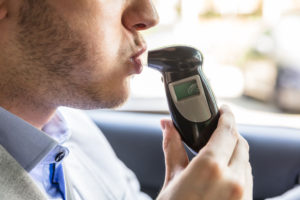
A car accident in Texas may change the way breathalyzers function after a sober driver hit and killed a woman in Texas.
18-year-old Alexis Butler was killed earlier this month as she backed her car out of her driveway when she was struck on the passenger side of her vehicle by a pickup truck.
The driver of the pickup truck said he had taken his eyes off the road “for three to four seconds” because the ignition interlock device that was installed in his vehicle required him to recheck his blood alcohol content at regular intervals while the truck was in operation. An investigation at the scene of the crash showed no evidence that the driver of the pickup truck attempted to stop before he hit Butler.
The individual driving the pickup truck did not have any alcohol in his system at the time of the crash, but he admitted to being distracted by the mandatory testing of the in-car breathalyzer.
“It’s very concerning to us, as a police department, that an individual may be operating some type of ignition equipment while they’re in a moving vehicle,” said Lt. Chris Cook. “Number one thing we’ll look at is tracking down the original court order to read exactly what it said. And more importantly for us, as a police department, is to determine what the manufacturer recommendation is as far as the guidelines in how to operate this type of equipment.”
Police plan to reconstruct the crash to get a better idea of exactly what happened. They said that the driver could still be charged even though he hadn’t been drinking.
Ignition Interlock Device While Driving
Most people assume that ignition interlock devices only require the driver to blow into the device when they want to start their vehicle, but that’s not necessarily the case. Many of these devices require the driver to blow at regular intervals while driving in order to ensure that the driver isn’t drinking and driving. Manufacturers say this is just one way the device helps keep drivers from beating the system, like by having a friend blow into the device so that the drunk driver’s car will start.
Aside from regular monitoring while the vehicle is in motion, other technologies designed to make the device foolproof include:
- Cameras that take a picture of the person who is blowing into the device.
- Requiring the driver to hum while blowing so that they can’t use compressed air to fool the device.
While the two bulleted items seem to make sense, blowing into the device while it’s in operation seems dangerous. One commentor on the original story said his device made him blow while driving to the point where he’d get lightheaded before the device would get enough of a reading to register his BAC. This is clearly dangerous, and it’s already cost one person their life. I hope IID manufacturers and government officials take a closer look at how these devices operate so that we can best protect everyone on the road.





